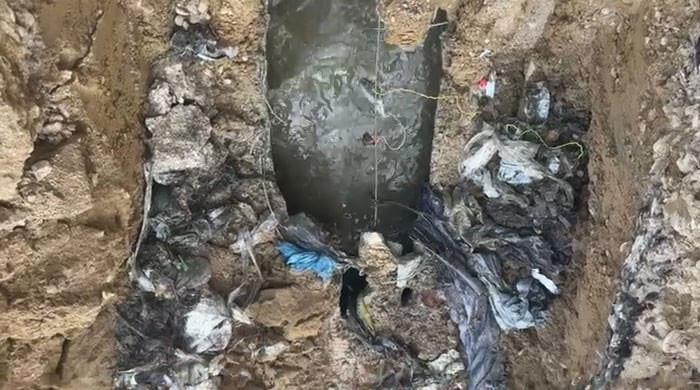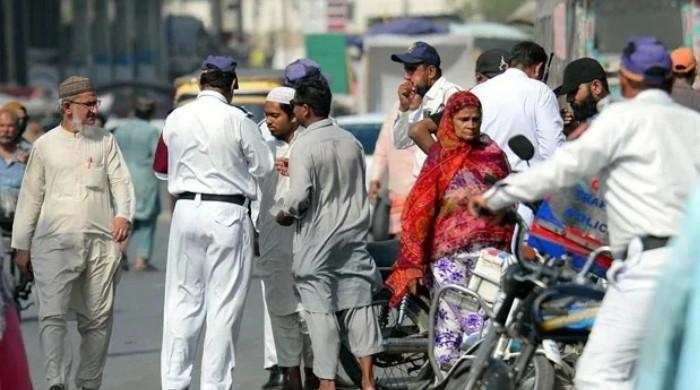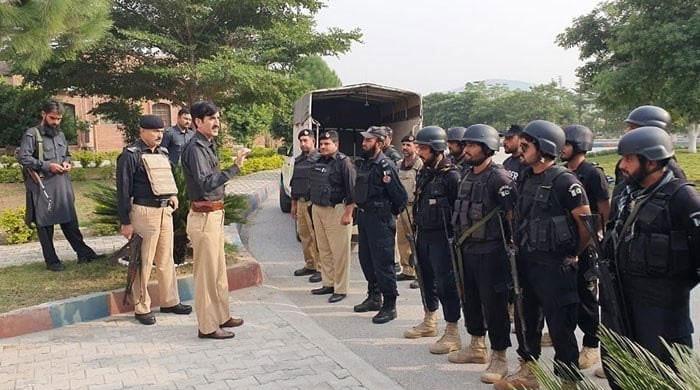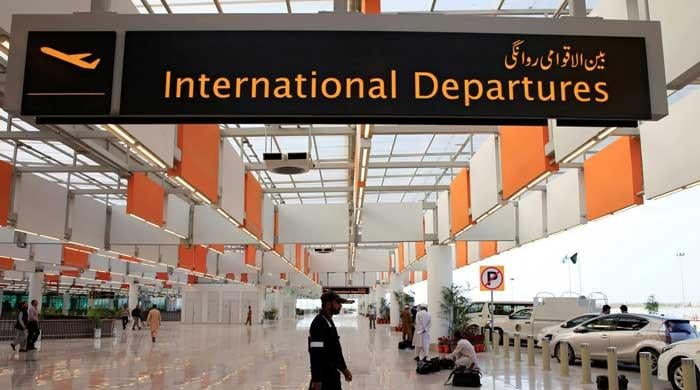Seven lives lost as highest rainfall in decades turns Lahore into urban swamp
Metropolis receives 291mm rain, most in 30 years; roads inundated; three die in KP rain-related incidents
July 05, 2023
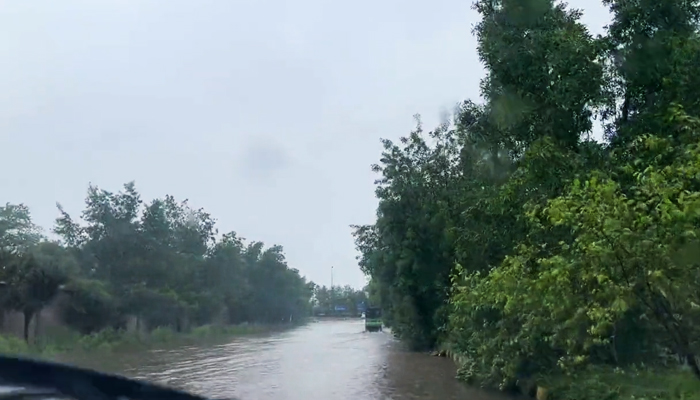
LAHORE: Incessant showers on Wednesday broke a 30-year-old record when the city received over 290mm of rain within a span of 10 hours, resulting in the death of at least seven people, officials said.
"Three people were electrocuted, two died after roofs collapsed, and a child drowned after rainwater accumulated," Punjab interim Chief Minister Mohsin Naqvi told journalists in Lahore.
In an update on his official Twitter handle, the interim CM said the rain death toll rose to seven.
The metropolis received 291mm of rain, during which more than a dozen areas recorded more than 200mm of rain, Commissioner Lahore Mohammad Ali Randhawa said, adding this is happening due to climate change and strong monsoon.
The city administration and all officers and staff of Water and Sanitation Authority (Wasa) Lahore are fully mobilised to ensure the drainage of rainwater, he added.
“Earlier this year, Lahore received the maximum rainfall of 256 mm on June 26 while in 2022, 238mm of rain was recorded in Lahore,” Randhawa said.
The commissioner said that in 2018, 288mm of rain was recorded in Lahore, adding the city has not received so much rain in such a short period of time in the last 30 years.
Meanwhile, MD Wasa Ghafran Ahmed said all low-lying areas would be cleared within a few hours after the rain stops.
According to Wasa Monsoon Control Room, the city’s Lakhsmi Chowk area received 291mm of rain, Nishter Town 277mm, Qurtaba Chowk 270mm, Gulshan-e-Ravi 268mm, Pani Wala Talab 268mm, Johar Town 260mm, Tajpura 249mm, and Iqbal Town 232mm.
The rain spell, which started earlier in the morning, paralysed the city as all the major roads and connecting streets were waterlogged making commuting impossible. Many vehicles broke down on the roads due to knee-deep water.
Rainwater entered the houses in low-lying areas of Shah Jamal and Tajpura while the electricity supply was cut, making life more miserable.
CM visits city
Punjab CM Naqvi said that record-breaking rain had caused urban flooding while the canal overflowed following heavy downpours.
“All the cabinet members and administration are in the field to clear the water. I am also monitoring the situation in the field and getting updates from all over Lahore continuously,” the chief minister said as he visited the city to oversee relief operations.
Last week, Pakistan Meteorological Department (PMD) warned that moist currents from the Arabian Sea are likely to penetrate in upper parts of the country, and a westerly wave was also likely to enter the upper parts of the country on Monday, causing heavy rainfall from July 4 to 7 across the country.
Three die in KP
At least three people died in rain-related incidents in different districts of Khyber Pakhtunkhwa, Geo News reported.
According to the Provincial Disaster Management Authority (PDMA) report, two people died in Shangla, and one in Karak.
The PDMA said eight people were injured, while seven houses sustained partial damage. One house was completely damaged.
An official of the KP relief department said that relief would be given to the victims as per the government policy.
Flood warning
According to the latest meteorological analysis, deep trough of the westerly wave along with strong incursion of monsoon currents from both sources and approaching upper air circulation, due to which widespread heavy to very heavy rainfall with extremely heavy falls at scattered places is expected over the upper catchments of Rivers Sutlej, Ravi and Chenab and up to some extent over River Jhelum.
Due to these meteorological conditions, the advisory added, very high to exceptionally high-level flooding is expected in River Chenab.
It further said that the flood situation in rivers Ravi and Sutlej would depend upon releases from India and high to very high-level flooding is also expected in the nullahs of Rivers Ravi and Chenab.




